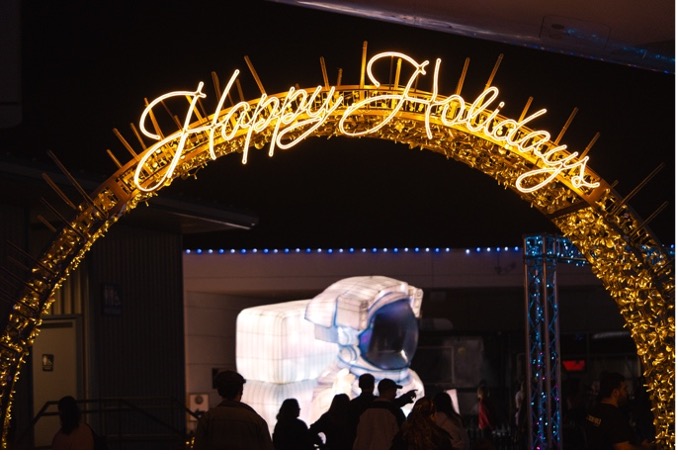On Oct. 11, 1958, NASA launched its first spacecraft, just ten days after the fledgling space agency opened its doors. Exactly one decade later, NASA achieved another first, launching the first crewed Apollo mission.
Just ten years separated NASA’s first launch, Pioneer 1, from its first crewed Apollo launch, Apollo 7. Today, we celebrate these launch anniversaries by looking back at both historic missions.

Pioneer 1
While it is known today as Pioneer 1, the spacecraft at the time of launch was called Able 2 (later renamed “Pioneer” by the U.S. Department of Defense), and although the flight was technically NASA’s first spacecraft launch, the mission was actually conducted by the United States Air Force.
The original plan was for Pioneer 1 to make it to the Moon, but a malfunction occurred during launch which prevented the spacecraft from breaking free of Earth’s gravity.
However, Pioneer 1 still returned valuable data, which included confirming the existence of the Van Allen radiation belts.
The flight may have only lasted 43 hours, but the Pioneer 1 mission remains significant in that it was NASA’s first spacecraft launch.
Apollo 7
Exactly ten years after the historic launch of Pioneer 1, NASA made history again. This time in launching the first crewed Apollo flight, Apollo 7.

Apollo 7 also marked the first time a three person American crew launched, and the first time there would be a live television broadcast from space!
Walter Schirra, Donn Eisele, and Walter Cunningham made up the three man crew. Their primary objectives for this flight centered around demonstrating the performance of their space vehicle and its rendezvous capability. The crew was also being evaluated, as were their support systems.
The mission was a success, even though the crew got colds during the mission. Schirra was the first to display symptoms, only 15 hours into the flight. Soon, Cunningham and Eisele were both sick as well.
According to NASA, colds present a unique challenge in microgravity, because the sinuses cannot drain from the head. Instead, the mucus accumulates, and fills the sinus passages. The only way to seek relief was for the crew to blow hard, which in turn would aggravate their ear drums.
Luckily, the crew was able to take aspirin and a decongestant which allowed them to continue with the mission, although there were some objections made to wearing helmets during their descent by Schirra.
In clip below, Schirra, who battled a cold in space, is seen during an old commercial for the cold tablet, Actifed.
The Apollo 7 mission successfully proved that the Apollo command and service module was ready for the next step, lunar-orbit.
In just ten short years, NASA went from launching their first spacecraft to launching their first crew of three, in preparation for humans to travel to the Moon. What will we see NASA accomplish in the next decade?
Future First
Next month, America’s space agency is set to make history again with the launch of NASA’s SpaceX Crew-1 flight, blasting off no earlier from Kennedy Space Center in Florida. The crew of four includes NASA astronauts Michael Hopkins, Victor Glover, and Shannon Walker, along with Japan Aerospace Exploration Agency (JAXA) astronaut Soichi Noguchi. Learn more about this exciting mission here.








